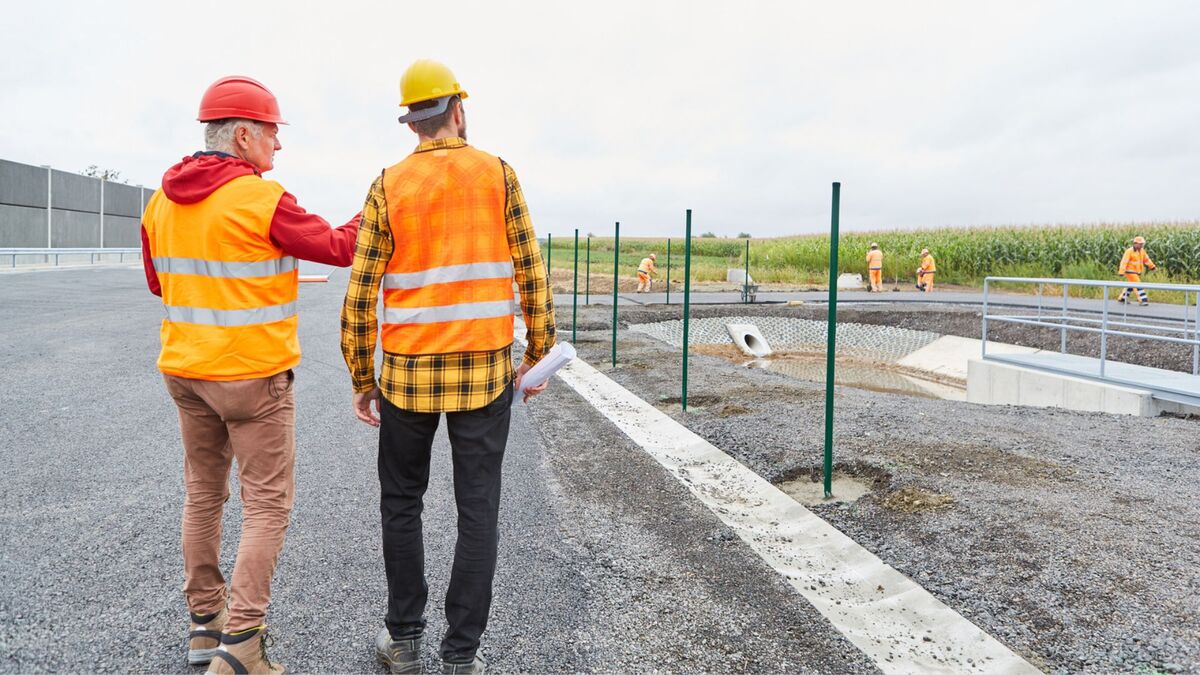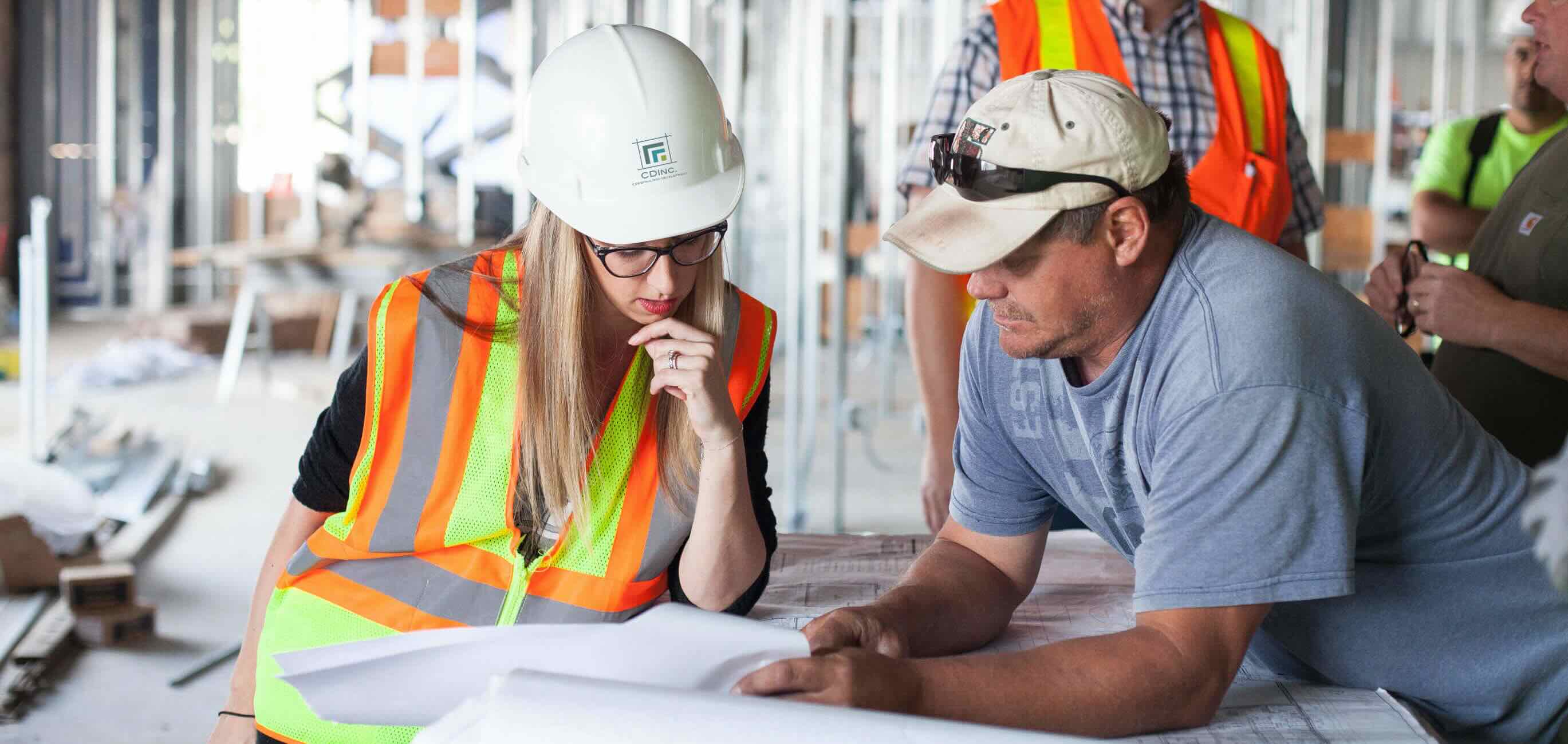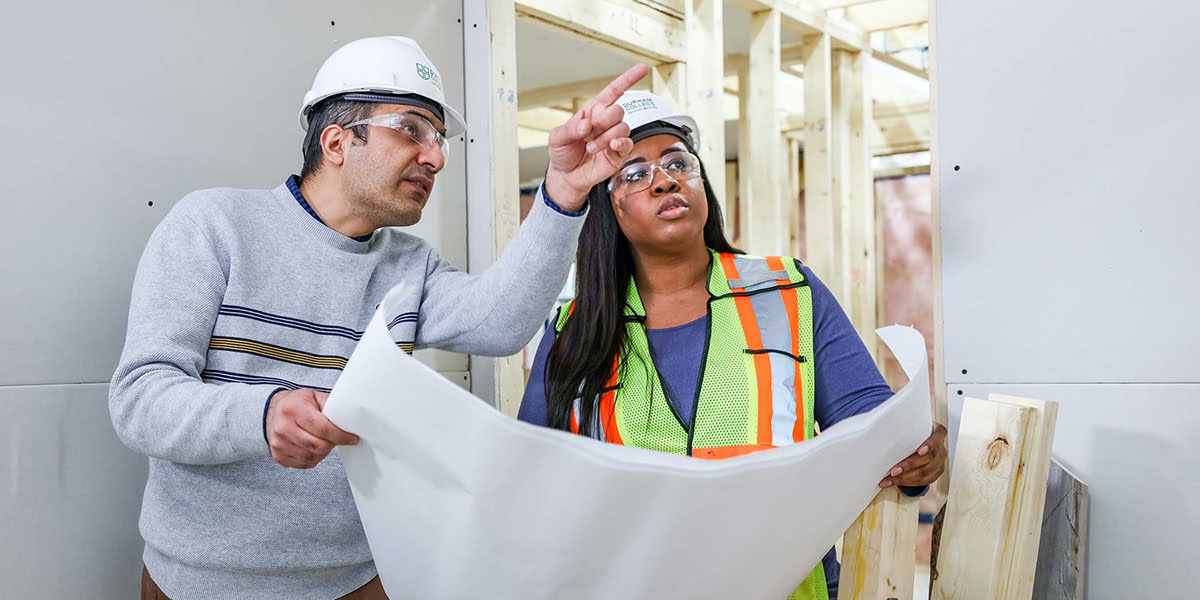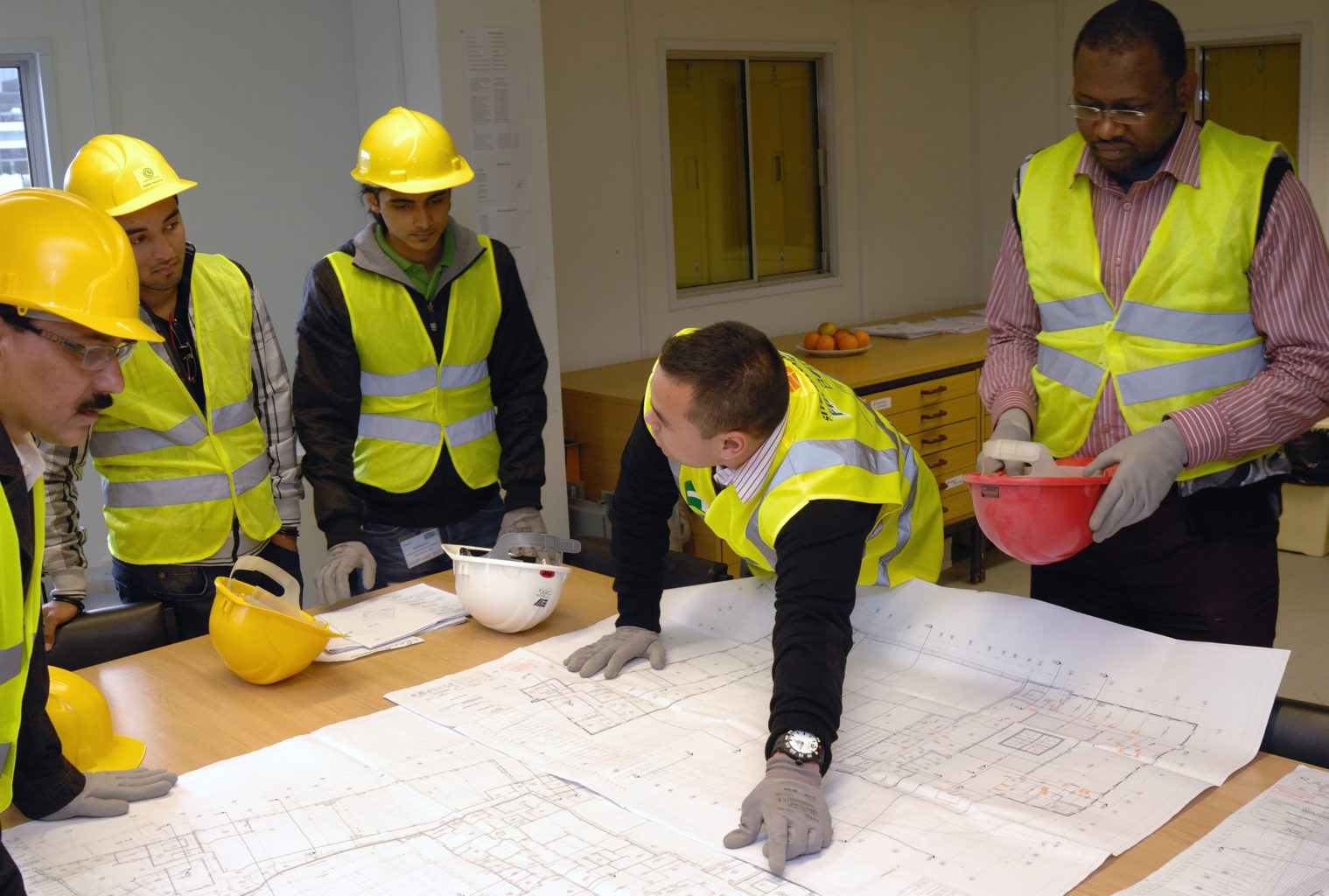Home>diy>Building & Construction>What Is Construction Manager At Risk


Building & Construction
What Is Construction Manager At Risk
Modified: December 7, 2023
Discover what a Construction Manager At Risk is and how they play a vital role in building construction projects. Build with confidence by understanding their responsibilities and expertise.
(Many of the links in this article redirect to a specific reviewed product. Your purchase of these products through affiliate links helps to generate commission for Storables.com, at no extra cost. Learn more)
Introduction
Welcome to the world of construction management! When it comes to overseeing and ensuring the success of a construction project, having the right expertise and knowledge is crucial. One approach that has gained popularity in recent years is the use of a Construction Manager at Risk (CMAR).
A Construction Manager at Risk is a project delivery method where the construction manager is hired during the design phase of a project and assumes the role of the general contractor. In this arrangement, the construction manager acts as a professional consultant to the owner, providing valuable insights and expertise to ensure that the project is completed on time and within budget.
Throughout this article, we will explore the intricacies of the Construction Manager at Risk approach, including its definition, roles and responsibilities, advantages and disadvantages, comparison with other construction project delivery methods, and case studies of successful CMAR projects. So, let’s dive in and explore this fascinating topic!
Key Takeaways:
- Construction Manager at Risk (CMAR) is a collaborative project delivery method where the construction manager assumes the role of the general contractor, offering early involvement, cost control, and risk mitigation to ensure successful construction projects.
- While CMAR offers advantages such as efficient project delivery and quality assurance, potential disadvantages like increased complexity and limited competitive bidding should be carefully considered. Proper planning and communication are crucial for mitigating these challenges.
Read more: What Is Risk Management In Construction
Definition of a Construction Manager At Risk
A Construction Manager at Risk (CMAR) is a project delivery method where a construction manager is hired by the owner during the early stages of the project, typically during the design phase. Unlike traditional project delivery methods where the construction manager serves as an independent contractor, in the CMAR approach, the construction manager assumes the role of the general contractor.
The construction manager at risk is responsible for managing the construction project from start to finish, including coordination, scheduling, budgeting, and quality control. They work closely with the owner and other stakeholders to ensure that the project meets their expectations and requirements.
Under the CMAR model, the construction manager provides valuable input during the design phase, offering their expertise to help optimize the project’s constructability, budget, and schedule. They review design documents and provide feedback to the design team, identifying any potential issues or conflicts that may arise during construction.
Once the design is finalized, the construction manager at risk becomes responsible for the construction phase. They procure subcontractors and suppliers, manage the construction process, coordinate inspections, and ensure that the project is completed on time and within budget. In this role, the construction manager acts as a single point of contact for the owner, streamlining communication and reducing the owner’s administrative burden.
At the heart of the CMAR approach is the concept of “at risk.” This means that the construction manager takes on the financial risk associated with delivering the project within the agreed-upon budget and schedule. If any cost overruns or delays occur, the construction manager is responsible for absorbing the additional costs, ensuring that the owner is not financially burdened.
In summary, a Construction Manager at Risk is a project delivery method where the construction manager assumes the role of the general contractor, providing comprehensive construction management services from the early stages of the project to its completion. This approach promotes collaboration, efficiency, and accountability throughout the construction process, ultimately leading to successful project outcomes.
Roles and Responsibilities of a Construction Manager At Risk
The role of a Construction Manager at Risk (CMAR) is multifaceted, encompassing a wide range of responsibilities throughout the project lifecycle. Let’s explore the key roles and responsibilities that a construction manager at risk undertakes:
1. Project Planning and Pre-construction
During the planning and pre-construction phase, the construction manager at risk plays a crucial role in collaborating with the owner and design team. Their responsibilities include:
- Reviewing the project scope, budget, and schedule
- Providing input and expertise during the design development phase
- Identifying potential constructability issues and proposing solutions
- Conducting value engineering analysis to optimize project costs
- Assisting with the selection and pre-qualification of subcontractors and suppliers
2. Construction Phase Management
Once the design is finalized and construction commences, the construction manager at risk takes charge of project management and coordination. Their responsibilities include:
- Procuring subcontractors and suppliers
- Creating and maintaining a project schedule, including milestone tracking
- Coordinating and supervising construction activities
- Ensuring compliance with building codes, regulations, and safety standards
- Managing project documentation, including permits and inspections
- Conducting regular site visits and quality control inspections
- Resolving any conflicts or issues that may arise during construction
3. Financial Oversight
As the construction manager at risk, financial oversight is a crucial aspect of the role. They are responsible for:
- Preparing and maintaining a detailed project budget
- Monitoring project costs and expenditures
- Implementing cost control measures to mitigate potential overruns
- Preparing and submitting progress payment requests
- Managing change orders and claims
4. Communication and Stakeholder Management
The construction manager at risk serves as a central point of communication, ensuring effective collaboration between all project stakeholders. Their responsibilities include:
- Facilitating regular communication with the owner, design team, subcontractors, and suppliers
- Providing regular project updates, including progress reports
- Addressing any concerns or issues raised by stakeholders
- Facilitating project meetings and ensuring prompt resolution of project-related matters
Overall, the role of a Construction Manager at Risk is dynamic and demanding. They must possess strong leadership, organizational, and communication skills to effectively manage and coordinate all aspects of the construction project. By assuming these roles and responsibilities, the construction manager at risk plays a pivotal role in delivering successful construction projects.
Advantages of Using a Construction Manager At Risk
Utilizing a Construction Manager at Risk (CMAR) approach offers several advantages that make it an attractive option for construction project delivery. Let’s explore some of the key advantages:
- Early Involvement: With CMAR, the construction manager is engaged early in the project, during the design phase. This allows for valuable input and expertise to be incorporated into the planning and design process, optimizing constructability, cost-efficiency, and overall project feasibility.
- Collaborative Approach: The CMAR approach encourages collaboration between the owner, construction manager, and design team. This fosters a team-oriented environment where all parties work together to achieve project success. Enhanced communication and coordination result in streamlined decision-making, reducing project delays and conflicts.
- Efficient Project Delivery: By involving the construction manager from the outset, potential design issues or conflicts can be identified early on. This proactive approach minimizes the need for costly rework and allows for more efficient project delivery, saving both time and money.
- Cost Control: With a CMAR approach, the construction manager works closely with the owner to develop and maintain a realistic project budget. Having their expertise in cost estimation and management ensures that project costs are closely monitored from the outset, helping to control expenses and avoid cost overruns.
- Quality Assurance: The construction manager at risk is responsible for maintaining quality and adherence to project specifications. They perform regular quality control inspections and coordinate with subcontractors to ensure that the work meets the required standards. This helps to deliver a high level of quality and reduces the potential for defects or rework.
- Risk Mitigation: Being “at risk” means that the construction manager takes on the responsibility for managing the project within the agreed-upon budget and schedule. This helps to mitigate financial risks for the owner, as any cost overruns or delays are absorbed by the construction manager, rather than being passed onto the owner.
- Single Point of Contact: In a CMAR arrangement, the construction manager serves as the primary point of contact for the owner. This simplifies communication, eliminates potential miscommunications, and streamlines decision-making processes. The owner has a single point of contact who is knowledgeable about the project and can provide prompt responses and resolutions.
- Flexibility in Project Adaptation: The CMAR approach allows for flexibility in adapting the project as it progresses. As the construction manager is involved throughout the entire lifecycle, they can offer alternative solutions or adjustments if unforeseen challenges or changes arise, ensuring the project stays on track.
Overall, the use of a Construction Manager at Risk offers numerous advantages, including early involvement, collaboration, efficient project delivery, cost control, quality assurance, risk mitigation, single point of contact, and flexibility. These benefits contribute to successful project outcomes, ensuring that construction projects are completed on time, within budget, and to the satisfaction of the owner.
A Construction Manager at Risk is a project delivery method where the construction manager is involved from the early stages, providing input on cost, schedule, and constructability, and assumes the risk for delivering the project within a guaranteed maximum price.
Disadvantages of Using a Construction Manager At Risk
While the Construction Manager at Risk (CMAR) approach has its benefits, there are also some potential disadvantages to consider. It’s important to be aware of these challenges to make an informed decision about whether CMAR is the right project delivery method for your construction project. Let’s explore some of the main disadvantages:
- Increased Complexity: Implementing the CMAR approach adds an additional layer of complexity to the project. With multiple stakeholders involved from the outset, effective coordination and communication become crucial. Managing the relationships and responsibilities among the owner, design team, and construction manager requires careful attention to detail.
- Higher Costs: While CMAR can help control costs through early collaboration and cost management, the fees associated with hiring a construction manager can be higher compared to traditional project delivery methods. Additionally, the owner may need to bear the cost of any changes or adjustments requested by the construction manager during the project.
- Potential Conflict of Interest: In the CMAR model, the construction manager acts as both an advisor to the owner and a contractor responsible for construction. This dual role can create a potential conflict of interest, as the construction manager may prioritize their own interests over those of the owner. Effective communication and a clear understanding of roles and responsibilities are essential to mitigate this potential conflict.
- Limited Competitive Bidding: With a CMAR approach, the owner typically selects the construction manager based on qualifications and experience, rather than through a competitive bidding process. This means that the owner may not have the opportunity to consider multiple bids and compare pricing from different contractors, potentially limiting competition and pricing flexibility.
- Reduced Owner Control: Employing a CMAR approach means giving a greater degree of control and decision-making authority to the construction manager. While this can lead to more efficient project delivery, it also reduces the direct control that the owner may have over certain aspects of the construction process.
- Risk of Limited Design Innovation: Early involvement of the construction manager in the design phase of the project may lead to a conservative approach that prioritizes constructability and cost control over design innovation. This can hinder the exploration of new materials, technologies, or design concepts that could potentially enhance the project’s value or aesthetic appeal.
It’s important to note that these potential disadvantages can be managed and mitigated with proper planning, effective communication, and a clear understanding of individual project needs. Careful consideration of the specific project requirements and objectives is necessary to determine whether the advantages outweigh the potential disadvantages of using a Construction Manager at Risk.
Read more: What Are The Risks In Construction
Comparison with Other Construction Project Delivery Methods
When it comes to delivering construction projects, there are multiple project delivery methods available, each with its own set of advantages and disadvantages. Let’s compare the Construction Manager at Risk (CMAR) approach with other commonly used construction project delivery methods to understand the key differences:
- Design-Bid-Build: In the traditional Design-Bid-Build method, the owner contracts with an architect or engineer to design the project, and then solicits bids from contractors to construct the project. This sequential approach often results in a clear separation of roles and responsibilities between the design and construction phases. In contrast, CMAR allows for early contractor involvement during the design phase, fostering collaboration and providing valuable input into constructability and cost optimization.
- Design-Build: Design-Build involves hiring a single entity, the design-builder, who handles both the design and construction of the project. This integrated approach allows for a streamlined process and a single point of responsibility. However, it may limit the owner’s ability to have independent oversight and control over the design and construction phases. CMAR, on the other hand, maintains clear roles and responsibilities between the construction manager and the design team, allowing for independent oversight and collaboration.
- Construction Management at Agency: Construction Management at Agency (CMA) is similar to CMAR, but without the “at risk” component. In this method, the construction manager serves as the owner’s advisor, providing expertise and managing the construction process, but without assuming the financial risk. CMAR, on the other hand, places the construction manager “at risk,” holding them responsible for project delivery within the budget and schedule.
- Integrated Project Delivery: Integrated Project Delivery (IPD) is a collaborative approach that involves multiple stakeholders, including the owner, architect, contractor, and other key members, entering into a multi-party agreement. The goal is to foster collaboration, trust, and shared risk/reward among the project team. While similar in promoting collaboration, CMAR maintains a more traditional contracting relationship, with the construction manager acting as the general contractor and assuming financial risk.
- Public-Private Partnership: Public-Private Partnership (PPP) involves collaboration between a public agency and a private sector entity to deliver a construction project. The private entity may bear the responsibility for design, construction, financing, and operations. In contrast, CMAR is primarily focused on the construction phase, with the construction manager assuming the role of the general contractor, working closely with the owner.
The choice of project delivery method depends on various factors, such as project complexity, owner’s requirements, budget, and timeline. CMAR bridges the gap between the design and construction phases, fostering collaboration, and early contractor involvement. It provides the owner with the expertise and input of the construction manager, while also ensuring the accountability and financial risk management associated with the “at risk” component.
Ultimately, selecting the most suitable project delivery method requires careful evaluation of project-specific needs, objectives, and the desired level of collaboration and risk-sharing.
Case Studies of Successful Construction Manager At Risk Projects
Several construction projects have successfully utilized the Construction Manager at Risk (CMAR) approach, delivering outstanding results in terms of budget control, schedule adherence, and overall project success. Let’s explore a few notable case studies:
- Denver International Airport (DIA) Expansion: The DIA expansion project, completed in 2020, is a prime example of a successful CMAR project. The construction manager at risk worked closely with the design team to optimize the project’s constructability, resulting in efficient and cost-effective design solutions. By engaging the construction manager during the early stages of the project, potential issues and conflicts were identified and addressed promptly, leading to a smooth construction process and timely completion within the allotted budget.
- University Medical Center New Orleans: The construction of the University Medical Center New Orleans utilized the CMAR approach to ensure the project’s success. The construction manager at risk played a crucial role in collaborating with the design team to identify constructability challenges early on and develop effective solutions. By maintaining open communication and coordination throughout the project, potential delays and cost overruns were minimized, allowing for the timely completion of the medical center within budget.
- Renovation of Historic Landmark Building: In the renovation of a historic landmark building, the CMAR approach proved to be instrumental in preserving the building’s architectural integrity while upgrading its functionality. The construction manager at risk worked closely with the owner, architect, and preservation experts to ensure that the historical significance of the building was maintained throughout the renovation process. By integrating their expertise into the design and construction phases, the project team successfully completed the renovation within the specified budget and schedule, while adhering to strict preservation standards.
- Education Facility Expansion: An education facility expansion project showcased the benefits of the CMAR approach in managing complex construction projects. The construction manager at risk collaborated closely with the school administration and design team to optimize the project’s design, ensuring it met the specific educational requirements. Through effective communication and coordination, potential challenges were proactively addressed, resulting in a streamlined construction process and efficient project delivery. The project was completed within the planned budget, providing the school with a much-needed expansion to accommodate growing student populations.
These case studies demonstrate the successful application of the CMAR approach across different types of construction projects, including airport expansion, healthcare facilities, historic renovations, and educational facilities. The early involvement of the construction manager, collaboration with the design team, and careful project management are key factors that contribute to the success of CMAR projects.
By adopting a proactive and collaborative approach, CMAR projects can overcome potential challenges, optimize constructability, control costs, and deliver high-quality construction projects that meet the owner’s requirements and expectations.
Conclusion
The Construction Manager at Risk (CMAR) approach has emerged as a popular and effective project delivery method in the construction industry. By engaging the construction manager early in the project lifecycle and assuming the role of the general contractor, CMAR fosters collaboration, cost control, and efficient project delivery. Through a comprehensive understanding of the CMAR process, we have explored its definition, roles, and responsibilities, advantages and disadvantages, comparison with other project delivery methods, and real-life case studies.
CMAR offers numerous benefits, including early contractor involvement, collaboration, efficient project delivery, cost control, quality assurance, risk mitigation, a single point of contact, and flexibility. The construction manager at risk plays a critical role in optimizing constructability, managing the construction process, and ensuring project success.
However, it is essential to be aware of the potential disadvantages, such as increased complexity, potential conflicts of interest, limited competitive bidding, reduced owner control, and potential limitations in design innovation. Proper planning, effective communication, and a clear understanding of project requirements are necessary to mitigate these challenges.
When comparing CMAR with other project delivery methods, such as Design-Bid-Build, Design-Build, Construction Management at Agency, Integrated Project Delivery, or Public-Private Partnerships, it is crucial to evaluate the specific needs, complexities, and objectives of the project. Each method has its own advantages and considerations, and the appropriate choice depends on various factors.
Real-world case studies have demonstrated the successful implementation of CMAR in diverse projects, including airport expansions, medical facilities, historic renovations, and education facility expansions. These examples highlight the importance of early collaboration, effective communication, and proactive project management in achieving successful outcomes.
In conclusion, the Construction Manager at Risk approach offers a collaborative and proactive solution to project delivery, characterized by early contractor involvement and a shared commitment to project success. By leveraging the expertise of the construction manager, owners can optimize constructability, control costs, and streamline the construction process. With careful planning, effective communication, and proper execution, CMAR can lead to successful construction projects delivered on time, within budget, and to the satisfaction of all stakeholders involved.
Frequently Asked Questions about What Is Construction Manager At Risk
Was this page helpful?
At Storables.com, we guarantee accurate and reliable information. Our content, validated by Expert Board Contributors, is crafted following stringent Editorial Policies. We're committed to providing you with well-researched, expert-backed insights for all your informational needs.















0 thoughts on “What Is Construction Manager At Risk”